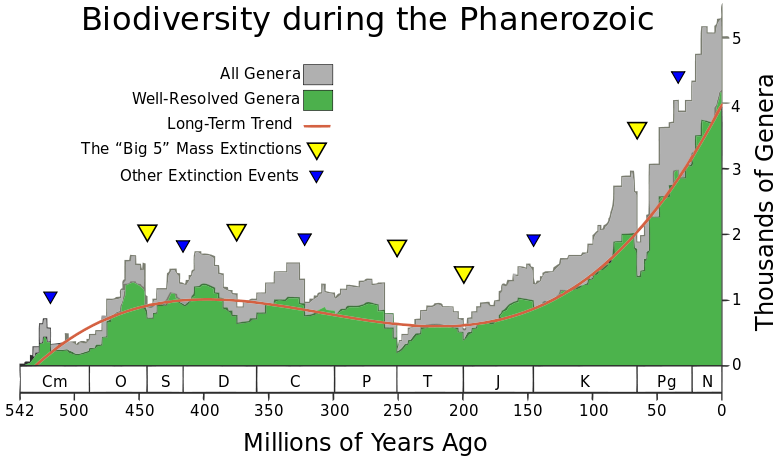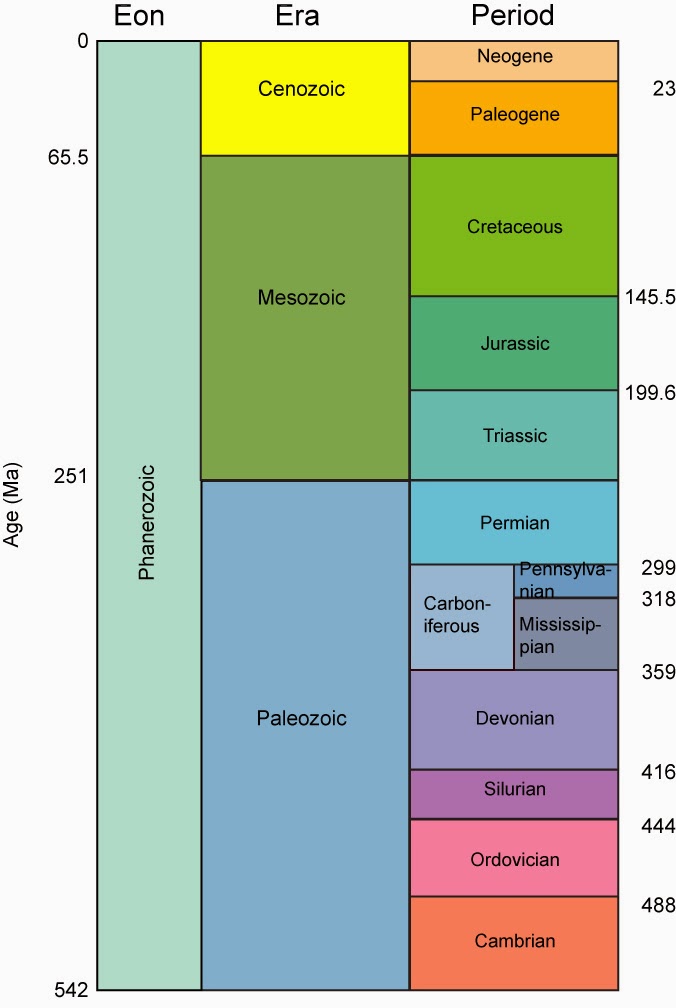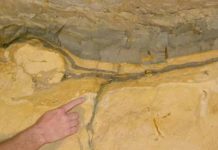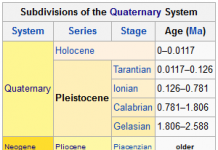The Phanerozoic is the current geologic eon in the geologic time scale, and the one during which abundant animal life has existed. It covers roughly 542 million years (541.0 ± 1.0) and goes back to the time when diverse hard-shelled animals first appeared. Its name derives from the Ancient Greek words φανερός and ζωή, meaning visible life, since it was once believed that life began in the Cambrian, the first period of this eon. The time before the Phanerozoic, called the Precambrian supereon, is now divided into the Hadean, Archaean and Proterozoic eons.
The time span of the Phanerozoic includes the rapid emergence of a number of animal phyla; the evolution of these phyla into diverse forms; the emergence and development of complex plants; the evolution of fish; the emergence of insects and tetrapods; and the development of modern faunas. During this time span tectonic forces caused the continents to move and eventually collect into a single landmass known as Pangaea, which then separated into the current continental landmasses
Timing
The Proterozoic-Phanerozoic boundary happened 541.0 ± 1.0 million years ago. In the 19th Century, the boundary was set at the first abundant animal (metazoan) fossils. But several hundred groups (taxa) of metazoa of the earlier Proterozoic era have been identified since systematic study of those forms started in the 1950s. Most geologists and paleontologists would probably set the Proterozoic-Phanerozoic boundary either at the classic point where the first trilobites and reef building animals (archaeocyatha) such as corals and others appear; at the first appearance of a complex feeding burrow called Treptichnus pedum; or at the first appearance of a group of small, generally disarticulated, armored forms termed ‘the small shelly fauna’. The three different dividing points are within a few million years of each other.
The Phanerozoic is divided into three eras: the Paleozoic, Mesozoic, and Cenozoic. In the older literature, the term Phanerozoic is generally used as a label for the time period of interest to paleontologists, but that use of the term seems to be falling into disuse in more modern literature.
Biodiversity

hyperbolic model (widely used in demography and macrosociology) than with exponential and logistic models (traditionally used in population biology and extensively applied to fossil biodiversity as well). The latter models imply that changes in diversity are guided by a first-order positive feedback (more ancestors, more descendants) and/or a negative feedback arising from resource limitation. The hyperbolic model implies a second-order positive feedback. The hyperbolic pattern of the world population growth arises from a second-order positive feedback between the population size and the rate of technological growth.[1] The character of biodiversity growth in the Phanerozoic can be similarly accounted for by a feedback between the diversity and community structure complexity. It is suggested that the similarity between the curves of biodiversity and human population probably comes from the fact that both are derived from the interference of the hyperbolic trend with cyclical and stochastic dynamics.
Note : The above story is based on materials provided by Wikipedia











